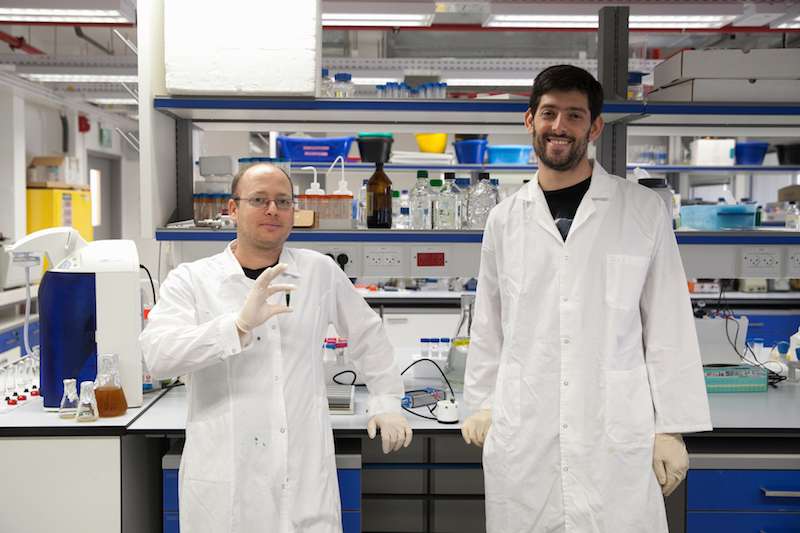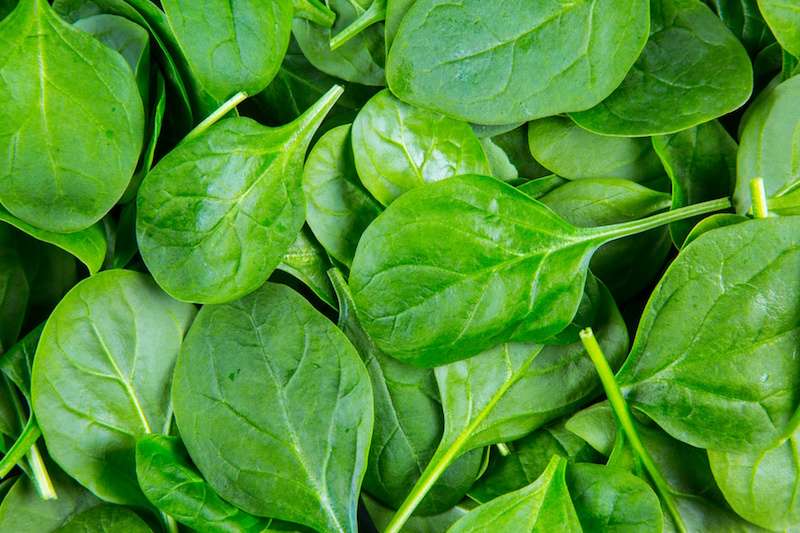Researchers discover a cell in spinach that uses sunlight to produce electricity and hydrogen

Using a simple membrane extract from spinach leaves, researchers from the Technion-Israel Institute of Technology have developed a bio-photo-electro-chemical (BPEC) cell that produces electricity and hydrogen from water using sunlight. The raw material of the device is water, and its products are electric current, hydrogen and oxygen. The findings were published in the August 23 online issue of Nature Communications.
The unique combination of a man-made BPEC cell and plant membranes, which absorb sunlight and convert it into a flow of electrons highly efficiently, paves the way for the development of new technologies for the creation of clean fuels from renewable sources: water and solar energy.
The BPEC cell developed by the researchers is based on the naturally occurring process of photosynthesis in plants, in which light drives electrons that produce storable chemical energetic molecules, that are the fuels of all cells in the animal and plant worlds.
In order to utilize photosynthesis for producing electric current, the researchers added an iron-based compound to the solution. This compound mediates the transfer of electrons from the biological membranes to the electrical circuit, enabling the creation of an electric current in the cell.
The electrical current can also be channeled to form hydrogen gas through the addition of electric power from a small photovoltaic cell that absorbs the excess light. This makes possible the conversion of solar energy into chemical energy that is stored as hydrogen gas formed inside the BPEC cell. This energy can be converted when necessary into heat and electricity by burning the hydrogen, in the same way hydrocarbon fuels are used.

However, unlike the combustion of hydrocarbon fuels – which emit greenhouse gases (carbon dioxide) into the atmosphere and pollute the environment – the product of hydrogen combustion is clean water. Therefore, this is a closed cycle that begins with water and ends with water, allowing the conversion and storage of solar energy in hydrogen gas, which could be a clean and sustainable substitute for hydrocarbon fuel.
The study was conducted by doctoral students Roy I. Pinhassi, Dan Kallmann and Gadiel Saper, under the guidance of Prof. Noam Adir of the Schulich Faculty of Chemistry, Prof. Gadi Schuster of the Faculty of Biology and Prof. Avner Rothschild of the Faculty of Material Science and Engineering.
"The study is unique in that it combines leading experts from three different faculties, namely three disciplines: biology, chemistry and materials engineering," said Prof. Rothschild. "The combination of natural (leaves) and artificial (photovoltaic cell and electronic components), and the need to make these components communicate with each other, are complex engineering challenges that required us to join forces."
Journal information: Nature Communications
Provided by American Technion Society




















